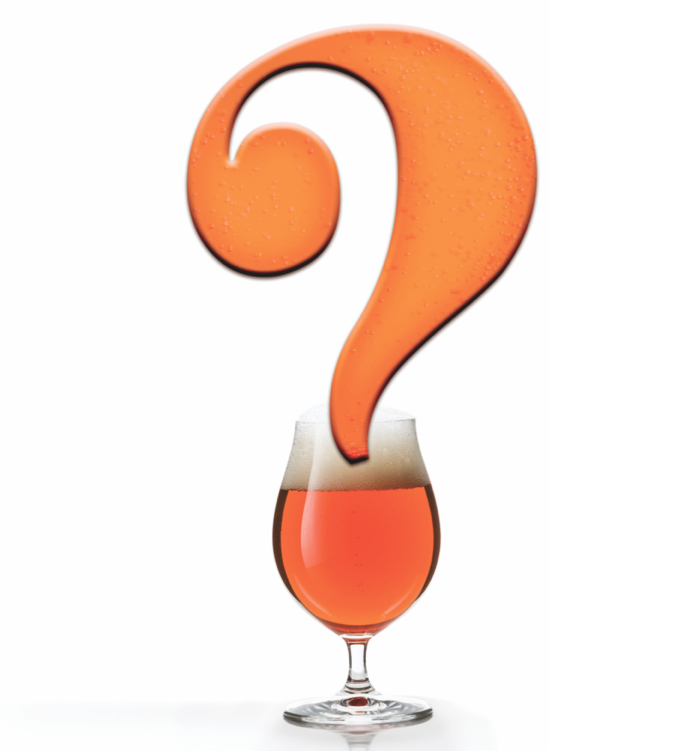Brewing with Raspberries
Q: I would like to brew a batch of raspberry wheat beer without using concentrated flavoring. The flavor concentrates work well, but I would like to try brewing with real berries.
— Mike Cefaratti • National Park, New Jersey
A: There are obviously two primary methods used to add fruit to beer; to the wort prior to fermentation or to the beer at some point in the fermentation process. In my opinion the best place to add fruit is after the primary fermentation has begun to tail off because the retention of fruit aromas is best if the fruit is not added to the wort. Also, the addition of fruit sugars at the end of fermentation results in an active secondary fermentation that helps dry these beers out.

Many first-time fruit beer brewers are not sure how much fruit to add. Like nearly all brewing topics there are no absolute rules about addition rates, but a good starting point is one pound of fruit per gallon of beer (0.45 kg per 3.8 L). Another question that often arises relates to “sanitizing” the fruit. Since fruit almost always is covered in yeast, brewers are often concerned about contaminating their beers with wild yeast. While this can happen, the thing to keep in mind is beer contains a lot of yeast cells and this yeast population is a formidable hurdle for wild yeast to combat and have much effect on beer flavor. Using quality fruit helps minimize the population of wild yeast because damaged fruit, for example smashed, causes juices to release and this increases the wild population.
Some brewers, including some notable commercial breweries, use a blanching method to reduce microbiological populations on the surface of fruit before adding the fruit to their beer. You can do this at home by bringing a large pot of water to a boil and adding your whole fruit to the pot and holding it for 30-60 seconds after the boil resumes. Immediately transfer the fruit to an ice bath to stop the process. This is made easy if you have a pasta cooker or some sort of cookware that allows you to move the fruit from hot water to ice water without having to dump the pot of water. By using this type of method you can blanch several small lots using the same pot of boiling water. After blanching you can add the fruit to your beer or freeze it in storage bags until your beer is ready for the fruit.
If you are really concerned about wild yeast and do not want to blanch your fruit I suggest taking a lesson from the winemaking playbook and using Campden tablets (potassium metabisulfite) to get control of the wildlife before adding the fruit. If you want to do this, add one tablet per gallon (3.8 L) of juice or crushed fruit and wait 24 hours before adding the fruit to the beer. I have brewed several types of fruit beers with a variety of fruits and have never had any problems when adding the fruit to beer after primary fermentation.
You state in your question that you are not interested in adding fruit concentrates and I understand that concentrates lack the appeal of fresh fruit. There are fruit concentrates that are simply concentrated fruit juice and there are some advantages to these products. One big advantage is that many of these products have been pasteurized to kill yeast and bacteria. Another fruit option to consider is fruit puree that has been aseptically packaged. There is a wide range of fruits processed in this manner and they have all the qualities of fresh fruit and the benefits of pasteurization.
One thing about brewing fruit beer at home or in a small brewery that some brewers find frustrating is the lack of sweetness. I personally dislike sweet beers so this is not a big source of consternation in my brewing life, but there are some who want to brew a sweet fruit beer. In order to do this you need to retain sweetness in the beer and the challenge is that sweetness is synonymous with fermentable sugars.
Some breweries make sweet fruit beers by leaving fermentable sugars in the beer, or simply “back-sweeting” at the end of the process. Then they pasteurize the beer to kill yeast and prevent the beer from drying out in the bottle and potentially resulting in bottle grenades. Another method used by some, especially winemakers and cidermakers, is adding sulfite or sorbate to kill yeast and preserve the desired level of sweetness. And then there are some brewers who rely on cold temperatures to prevent the residual sugars from fermenting. I would only do this at home when using kegs for these sweeter beers. Bottling sweet beers without the use of pasteurization or the addition of sulfite or sorbate is asking for problems. If you want residual sweetness in your fruit beer, please re-read the above paragraph at least once and consider how you will prevent re-fermentation in the bottle because exploding bottles of homebrew can result in severe bodily harm.



